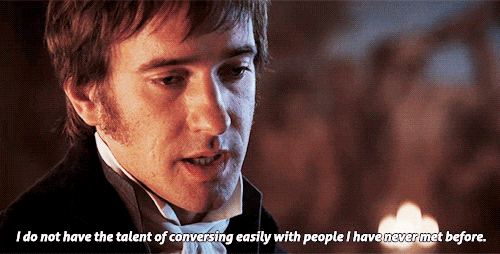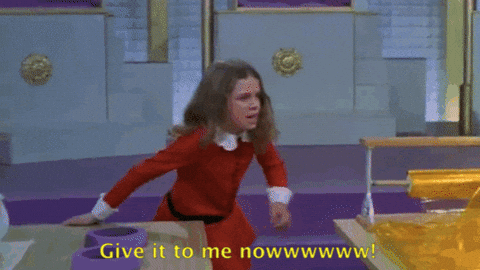Introduction TOOLKIT SERIES 3- By Dramaturg Suzanne Bell
”Theatre is like a gym for empathy. It’s where we can go to build up the muscles of compassion, to practice listening and understanding and…
So, you have a brilliant idea for a play, a gripping story with tension and stakes, an idea that is inherently theatrical and meant to be put in front of a live audience, and a selection of characters trying to achieve something despite the obstacles in their way. You may have already put a load of this into scripted dialogue, or have some scenes you’ve been having a play with, or even be looking over a full first draft wondering what to do with is now, Or you just have some of those things and you are piecing together and building the rest. Excellent, you’re on your way to having a play no matter where you are on that journey, you have begun.
Then, as the words start to flow, and when you look back over them, you worry that you’re missing something in the characters voices. Do they all sound the same as each other? How can they not, they all came out of your mind from, every element of them fabricated in your brain. So how do you make sure they don’t all sound like you, or even just ensure they haven’t all got the same voice as each other?
I’m going to talk predominantly about naturalistic dialogue, building characters with authentic voices. There are of course many stylised choices that can be made when putting a play together which would have an impact on the way characters talk, even within realism, but if you are looking at creating individuality in any context here are some thoughts and exercises you could consider when writing and redrafting. There will be a language of the play which is governed by setting in time and place, amongst other factors, but within that you can still find difference and nuance between the people you put in front of an audience.
The thing to keep in mind when looking at character is that everything that you know about them, all that you have built, informs their actions and their voice. The deeper you go into their identity the more you can bring to life the way they would behave, which will inform their actions and they way they express themselves which gives you their individual voice.
Let’s start by looking at the wider basics and how this influences the language you might use. It’s possible that if you’re a planner who makes copious notes before you start writing that you have already put together a character profile, but if not you’ll have likely already decided a few things about your characters such as their age, sex, gender, heritage, any disabilities, sexuality, country of birth, etc, and all of these can have an impact on how your character talks. Take age as an example, how many 90 year olds do you know who use the same language as a typical seventeen year old? Would your grandma say ‘yeet’? Would your teenage nephew say ‘I beg your pardon?’ in a casual conversation? Obviously the answer could be yes to these, in specific circumstances or if you’ve leaned in to a choice, but it’s likely the answer is no.

Exercise 1
If you have a scene with two people from different generations highlight anything that they say that might age them, accurately or otherwise. Think about what you intended for that character, did you want them to represent their generation accurately or are you trying to push against it (for example with a ‘cool dad’ who is trying to keep up with TikTok trends to impress his children). Now you have those highlighted you can chose whether you redraft to fit your desired reading of the characters based solely on their age, and you can consider how this choice sets their individual langue apart. In the Tom Holland Spiderman films (no spoilers) Peter Parker’s dialogue is not interchangeable with Tony Starks, for example, based on many things but very definitely because of the child/adult dynamic that has been set up – it doesn’t just effect the ‘lingo’ but also the way they address each other, the confidence they have around each other and also formality, the list goes on.
The same analysis of a scene can be applied looking at almost any protected characteristics (such as sex, gender, heritage, etc as mentioned above) as well as the decisions that you have made about their upbringing, education, relationships, politics, opinions, and so on.

Many writers find it useful to build a character profile by answering all of these questions, as well as more obscure questions such as ‘their smallest secret’, ‘when they last cried’, ‘something they overheard and never told anyone’, ‘the thing in their bag/pocket they can’t leave the house without’, ‘their bad habit’, and so on – you can find many of these ideas online and in countless books on writing. It may also be a good time to think about your characters view of the world, the things that will inform their behaviours in the play, you could use these as first person prompts ‘people are …, I am …, the world is …’ to distill these thoughts. In both small and more obvious ways all of these decisions have an impact on how a character talks and presents themselves. These are the things that make them individuals and so should make them each sound unique automatically if taken into account when writing.
Exercise 2
If you would like to play around with writing in characters voice you can just try a little free writing from their perspective, in first person. With free writing you just put pen to paper (or fingers to keyboard) and don’t pause for thought but just let a stream of words flow out of you, if you get stuck just repeat the last word you wrote until you find yourself out of the blockage.
If you want a prompt so that you are not going in with endless possible talking points I like to get a character to describe their perfect cup of tea. Imagine who they are talking to if it helps, and if you stray away from the prompt that is perfectly fine. Bring in details about their life, how their Avo used to have a sugar bowl in Portugal, the sugar from it always tasted sweeter than out of the bag, or how their cat Chester always watched them pouring the milk in, licking their lips.
This will help you build a voice for your character because you are forcing yourself to inhabit them and see the world from their perspective, and as a bonus you may find some tasty information about them crops up too.

Knowing where your story is set, both in terms of location and moment in time, will have an impact on your characters voices. Obviously you don’t have to be true to the language of a certain era if that is not the intention of your piece, but bear in mind anachronisms if you are writing a story set historically. If you have different timelines in your play, any scenes that happen many years apart, check whether you are being truthful to the eras you are representing and if differences can be found to bring clarity for a reader/audience. If you think about the likely syntax of a Victorian nobleman compared to an inmate on death row in modern day America, the first will probably use far longer more complex sentence structure, for example. Clearly this is a crude example, but if you look over your dialogue can you find any indicators of time or place, and are these truthful to the setting you have created?

Now, how about we consider individual/personal context and expertise? You might have set your play in a specific work environment, e.g. a prison/spaceship/farm, and some of your characters could be experts in that work or living space. All environments have their own jargon, characters who know each other well will have their own shorthands with each other, and characters new to these places will have parts of this vocabulary missing. If you watch any medical drama you will hear so many terms that might be alien to you flowing comfortably out of a doctors mouths in even the most high pressure situations. Only some characters have that knowledge in the same way only some characters will be able to keep up with playground insults or pop culture references. What are your characters influences, how does their environment and knowledge level change the way they interact with others?
Exercise 3
Chose a setting that would likely have a shared language between the people living or working there, as in the paragraph above (a lab, a school playground, a circle of hell). Write a list of actions/activities/jobs/occurrences that are specific to that location, for example if I were to choose a garden centre I might list:
Now make up a list of shortcuts people might use for those things, whether that is abbreviations and initialisms or code words and slang. For example:
Try to write a scene with at least three characters, two of them fully comfortable with the lingo you have created and the other/s not able to understand. You could have that ‘other’ character/s trying to keep up, or playing along as if they know, or keeping quiet in the hope no one notices – you choose.
This exercise could also apply to most of the other characteristics listed earlier, such as place of birth, or a characters experienced culture or heritage. Use whatever differences you have between your characters and give the above exercise a try either using made up lingo or putting in real world language as needed.
We have looked at much of the broader context that will have an impact on the way your characters communicate, but how about their immediate surroundings, particularly how the characters feel about each other, the emotional context. This is another way in which every one of them will be different and so should sound different. The way someone talks to their crush will not be the same way they talk to their parents, or for more nuance it won’t be the same way they talk to the person who clearly has a crush on them but they are not interested in. What tactics do we use to hold on to our secrets, or to show someone how we feel? How forward do you want your characters to be with their emotions or opinions of others.

Exercise 4
This time find a play that you know well and have the text for. Go through it looking at one character and picking out everything they say about themselves, and as a separate list/s everything they say about every other character in the story. This can be broad enough to include inferences and stage directions. Pick another character and repeat. And if it’s more than a two hander keep going with the others.
Not only will this show you how all of them see themselves and each other, it’s also a great way to see how much they are willing to say about these things. Some people keep their opinions to themselves, or show how they feel in their actions more than their words, where others are upfront and brash in talking about the people they encounter.
If you then apply this exercise to your own writing do you find consistency, not just in the information but in who delivers it and how they approach that?
Leading on from this, the real bones of character, and what drives a play forward, is that they all want something. It is also likely that other characters are preventing them getting the thing that they want. There are so many ways in which this can influence the way they talk, and again creates unique voices for each character. These factors include the characters urgency; how much they believe they need the thing they desire (be that a physical thing, information, redemption, etc), and the power that they hold or status they have that aids or prevents them getting it.
If you were to write a quick scene now, where all that you know going in is that one person wants something and the other person is stopping them getting it, then you should already have two clear voices because their agendas will force them to talk tactically, revealing character through dialogue. See Simon Longman’s piece on Getting Characters Talking to see how you can simply build information through dialogue using wants/obstacles (https://www.writeaplay.co.uk/week-three-getting-your-characters-talking-interacting-with-each-other-and-creating-a-scene-simon-longman/).
From this add in thinking about the power dynamic between the characters, which you may have developed using some of the examples above of age or knowledge of context.
Exercise 5
Write a list of situations where one person has an urgent ‘want’ and the other character has the power to grant them that want, give yourself a couple of minutes to write down a handful of options (such as someone needs the toilet and the other has the bathroom key, one needs the password to join a zoom meeting the other has the link, one has a snake bite the other the antidote to the poison). If you have a long list circle three that interest you the most, they don’t have to be the most adventurous but it would be good to have different levels of urgency in the mix.
Next write a list of power dynamics, or generally relationships where one character has more authority over another, which might be self imposed such as the crush example above, though could be professional such as teacher/student or boss/employee, or circumstantial such as home owner/guest or regular service user/new client.
Have a go at writing each of your chosen three scenarios in their barest form, selecting different power dynamics from your second list. Write each one twice, with the character who ‘wants’ in both the powerful role and also the more subservient role. Look at the tactics you have employed depending on the power that you have given that character, how have they used language to assert their authority or lack of it? See how in all of the example scenes you have from this show different voices because each character has a different approach to getting what they want. There is also a lot to be said about what characters don’t say, where do these ‘tactics’ involve subtext, silence, or action? Chose the moments where characters hold back and don’t overstate things, something you may have already found while exploring power dynamics.
Once you have played around with the above exercise you can layer in the texture of everything else you know about the characters, all that we have been through and all that you already have in drafts and notebooks.

What I hope this piece has shown is that if you have built rich enough characters, knowing the things that have shaped them and what they desire, then their voices should naturally take on their own styles. No two people are the same, and everything that has made them will influence the way they present themselves. By inhabiting your characters you will see their differences and when writing their words you will be naturally compelled to represent them truthfully which will give you a unique voice for every one of them. As Lisa Goldman puts it in her fabulous book The No Rules Handbook for Writing, ‘Having a distinct voice as a writer is an advantage. If your characters are living, breathing individuals, then they will also be distinct and you don’t need to worry about that aspect too much. If they are not alive in your mind when you write them, they probably won’t live in the readers either.’
Ruby Clarke is a Sheffield based director, dramaturg and writer. She is the New Work Coordinator for Sheffield Theatres, Literary Associate for Hull based Silent Uproar, and an Associate Artist with Common Ground Theatre in York. With these companies she has worked on many scripts including Standing at the Sky’s Edge (Chris Bush), Typical Girls (Morgan Lloyd Malcolm), Run Sister Run (Chloe Moss), Life of Pi (Lolita Chakrabarti).
Her directing credits include Quicksand (Bar Lane Studios), The Mercy Seat (York Theatre Royal), Night of the Barghest (York Brewery) and Timon of Athens (International Shakespeare Festival) as well as directing drama undergraduates in The Cosmonaut’s Last Message …, Little Revolution and The Wheel at The University of Cumbria. She was Artistic Director of TakeOver Festival 2013 at York Theatre Royal and Resident Trainee Director at the West Yorkshire Playhouse in 2016, assisting on Charlie Miles’ Blackthorn, the Bronte musical Wasted and a production of Rudolf for under 5’s.
Ruby likes miniature replicas of pretty much anything, head rub greetings from her cats and stories that make her laugh about things that you shouldn’t find funny.
Comments
Add comment